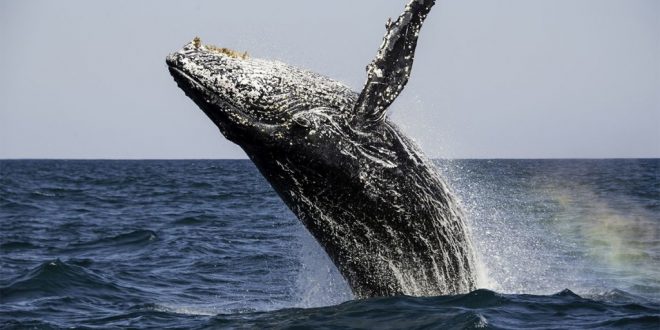A large sea creatures face a much higher extinction rate than their smaller brethren, scientists have learned.
“There are a lot of reasons to think that what we’re seeing in the modern ocean is a distinctive signature of human activities, rather than the environmental changes that we’re also inducing,” says Jonathan Payne, a paleobiologist at Stanford University and lead author on the new study.
In order to understand what’s driving the current drop in biodiversity—and what it will take for the planet to recover—researchers often look to past extinction events. Payne was five years old when Luis and Walter Alvarez published their now-famous theory that a massive asteroid slammed into the Earth roughly 65 million years ago, ultimately bringing about the demise of the dinosaurs. Payne, an amateur fossil hunter himself, has been fascinated by such catastrophes ever since.
Ocean-dwelling animals already have to contend with acidifying seawater, rising ocean temperatures, and the proliferation of dead zones as oxygen levels fall. When Payne and his colleagues compared current threat profiles to fossil records, he expected to find similarities between the kinds of species at risk today and the species that disappeared in at least some past extinction events, like the End Permian Extinction roughly 252 million years ago. “At that time we had lots of evidence for global warming, ocean acidification, loss of oxygen from the sea water,” Payne says. “These are the same kinds of environmental changes that we know are happening in the ocean today and that we anticipate for the future.”
Modern extinction patterns are nothing like what the Earth has seen in the past.
If those environmental changes are indeed the main threats to marine species today as well, the authors expected to see similar patterns of extinction in terms of which animals are most at risk. The team looked at how traits such as body size, habitat zone, motility, and feeding behavior (i.e. whether they are predators or prey) influence marine vertebrates’ and mollusks’ threat status today compared to ancient extinctions. But they found that modern extinction patterns are nothing like what the Earth has seen in the past.
For the first time, body size appears to be a powerful predictor of extinction threat; as body size increases, so does the risk of extinction. The loss of top, large-bodied animals can have effects that trickle down through the ecosystems. Even at extinction levels well below previous catastrophic events, it could take millions of years for ecosystems to recover, the authors note.
This body size finding, according to Payne, is consistent with the fact that humans preferentially fish from the top of the food web: We tend to go after larger creatures because they provide more food.
The fact that human activities may be directly driving extinction (rather than just human-induced climate change) is good news, Payne says. Even if humans were to drastically change our emissions behavior today, the processes that filter carbon dioxide from the atmosphere and the ocean are slow, which means it could take thousands of years to undue the ocean acidification and climate warming that human carbon dioxide emissions have caused. But overfished marine populations can bounce back relatively quickly.
“I think that the more of this that’s related to hunting and fishing activity, the more potential there is to quickly reverse it with the right management decisions,” Payne says. “The good news is that these are all species that we can still save. We can change what the threat profile looks like.”
Agencies/Canadajournal
 Canada Journal – News of the World Articles and videos to bring you the biggest Canadian news stories from across the country every day
Canada Journal – News of the World Articles and videos to bring you the biggest Canadian news stories from across the country every day



